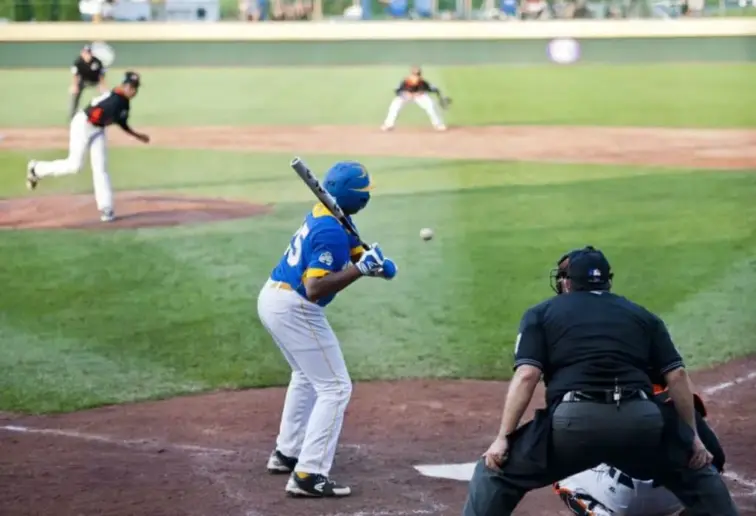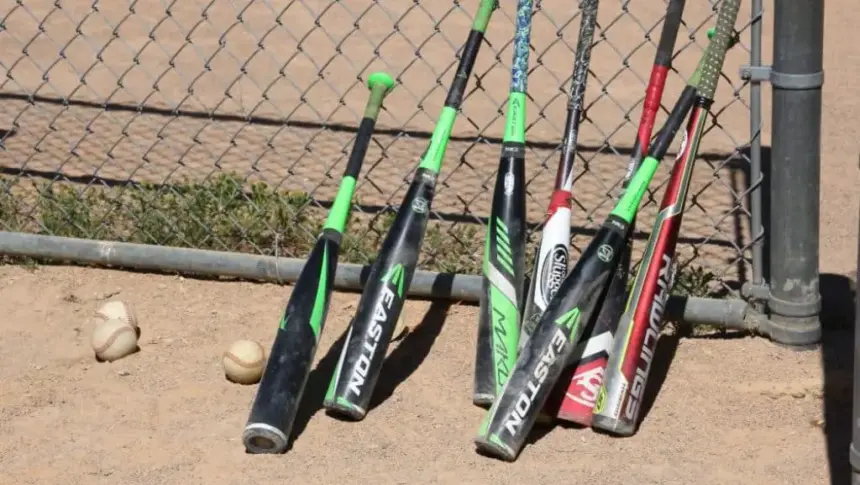Why Does College Baseball Use Aluminum Bats? (Answered!)
NCAA leagues are the primary training ground for future pros and the basic rules of the games are the same.
However, college baseball and MLB are still different in many ways.
Without getting deep into more subtle differences, one of the most notable distinctions is that two competitions use different bats.
While MLB players use only wooden bats, in college, a large majority of hitters play with metal (aluminum) bats.
The difference in materials the bats are made of may not seem like a big deal but it has a great effect on the gameplay both in college and in mlb.
Below, I’ll explain why does college baseball use aluminum bats and look into what each of these types of bats brings to the game.
Table of Contents
Why Does College Baseball Use Aluminum Bats?

Not surprisingly, the dominance of aluminum bats in college baseball has to do with money.
A single aluminum bat is more expensive than a single wooden bat.
However, in the long run, they’re more cost-effective. Metal bats are less likely to break, so they can be used for incomparable more at-bats.
College baseball is not as profitable as football or basketball, so finances always play a role.
Safety matters, too. Broken wooden bats and the potential of shards flying around are a risk to everyone on the field.
Aluminum bats do provide more ball velocity, so there’s a potential of getting hurt by a line drive.
Still, the introduction of the BBCOR standard made this much less of a risk.
Furthermore, the hitting ability of college players is not yet on the pro level, so light aluminum bats with larger sweet spots allow them to better display their skills.
What Bats Are Allowed In College Baseball?

Many fans are not aware that National Collegiate Athletic Association (NCAA) allows the use of both wooden and metal bats in competitions under its jurisdiction.
Wooden bats are legal and players can use them.
The NCAA rules state, however, that it has to be a one-piece wood bat, no more than 2.75 inches in diameter and no longer than 42 inches.
The aluminum bats have been in use in college baseball since 1974.
Throughout the years NCAA implemented different standards prescribing their characteristics, with the latest, BBCOR, introduced in 2011.
BBCOR standard controls the trampoline effect of the bat and how it affects the ball velocity. The maximum BBCOR value is 0.50.
It’s worth noting that not all non-wood bats are allowed, but only those made of aluminum alloy.
Composite bats, for example, have been banned in 2009, as the NCAA concluded that ball exit speeds they provide are dangerous.
Benefits Of Aluminum vs Wood Bats
The aluminum vs wood bats debate has been going on for years.
Both sides have some valid arguments as both types of bats offer some benefits.
Benefits Of Aluminum Bats
No products found.
Aluminum bats are much better for beginners and young and inexperienced players. They are lighter as the wooden bats, so they provide easier and faster swing.
Also, aluminum bats have a larger sweet spot, making it easier for young players to connect with the ball properly.
Another thing that goes in favor of aluminum bats is durability. They’re much less likely to break than bats made of wood, particularly on the inside pitches.
This also makes them more cost-effective and is the primary reason why college baseball has made the switch to aluminum bats.
Aluminum bats have thin barrel walls that flex when making contact with the ball.
This helps transfer more energy of the contact to the ball which makes it fly faster and further.
This is known as the trampoline effect.
On the other hand, wood bats absorb a lot of energy which doesn’t get transferred to the ball.
Benefits Of Wood Bats
No products found.
While the aluminum bats are lighter and there’s less vibration during the hit, players have a better “feel” with wood bats which provide better feedback on the hit.
The more skillful the player, the more important this is. It’s one of the main reasons why pros prefer wooden bats.
Wooden bats are heavier, and, while this reduces the swing speed, it provides more weight balance allowing batters to properly drive the ball.
This also helps players improve their strength and gives more natural power when the ball is hit properly.
Playing with wood bats helps players at college get ready for the next level in their careers.
Aluminum bats are great for beginners due to their large sweet spot and less weight, but, at some point, switching to wood is necessary if a player is serious about his career.
Why Are Aluminum Bats Banned From MLB?
Hitters in the MLB are on a different level than players at lower levels of the sport. Thanks to their skill and athletic ability, most of them can easily hit balls that fly well over 100 mph.
With the increased trampoline effect aluminum bats provide, this speed would be even more increased, making the baseball field a rather unsafe place for everyone on it.
In addition, a larger sweet spot of aluminum bats combined with the skill level of pro hitters would make making proper contact with the ball much easier which would put pitchers at a serious disadvantage.
Nailing the sweet spot with a wood bat is much harder which rewards players who possess more skill.
Last, but not least, baseball is a game of tradition, and wood bats are an important part of the sport’s culture.
Aluminum bats would likely cause an outrage among the baseball purists.
Conclusion
Even though wood bats are not illegal in college, aluminum bats dominate the NCAA competition and have been the preferred choice since their introduction almost 50 years ago.
The idea of college baseball switching back to wood bats has been floated before, but never gained any serious traction.
At the moment, with all the benefits aluminum bats bring, it’s just not a realistic option.
Aluminum bats cost less in the long run and are more suitable for young players who are still developing.
The introduction of the BBCOR standard dealt with some problematic issues when it comes to using aluminum bats.
It leveled the playing field between offense and defense while making the game safer for everyone involved.




